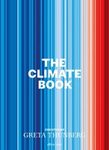About this book
Until a few decades ago, scientists generally believed that significant large-scale past global and regional climate changes occurred at a gradual pace within a time scale of many centuries or millennia. A secondary assumption followed: climate change was scarcely perceptible during a human lifetime. Recent paleoclimatic studies, however, have proven otherwise: that global climate can change extremely rapidly. In fact, there is good evidence that in the past at least regional mean annual temperatures changed by several degrees Celsius on a time scale of several centuries to several decades.
Contents
Preface
Dan Seidov, Bernd J. Haupt, and Mark Maslin vii
Ocean Currents of Change: Introduction
Eric J. Barron and Dan Seidov 1
Section I: Data and Climate Models: Windows to the Past
Synthesis of the Nature and Causes of Rapid Climate Transitions During the Quaternary
Mark Maslin, Dan Seidov, and John Lowe 9
The Big Climate Amplifier Ocean Circulation-Sea Ice-Storminess-Dustiness-Albedo
Wallace S. Broecker 53
Stochastic Resonance in the North Atlantic: Further Insights
R. B. Alley, S. Anandakrishnan, P. Jung, and A. Clough 57
Late Holocene (cal ka) Trends and Century-Scale Variability of N. Iceland Marine Records: Measures of Surface Hydrography, Productivity, and Land/Ocean Interactions
John T. Andrews, Greta B. Kristjansdottir, Aslaug Geirsdottir, Jorunn Hardarddttir, Gudrun Helgadottir, Amy E. Sveinsbjomdottir, Anne E. Jennings, and L. Micaela Smith 69
Changes of Potential Density Gradients in the Northwestern North Atlantic During the Last Climatic Cycle Based on a Multiproxy Approach
Claude Hillaire-Marcel, Anne de Vernal, Laurence Candon, Guy Bilodeau, and Joseph Stoner 83
Lower Circumpolar Deep Water Flow Through the SW Pacific Gateway for the Last 190 Icy: Evidence From Antarctic Diatoms
Catherine E. Stickley, Lionel Carter, I. Nick McCave, and Phil P. E. Weaver 101
Modeling abrupt Climatic Change During the Last Glaciation
Michel Crucifix, Philippe Tulkens, and Andre Berger 117
Simulating Climates of the Last Glacial Maximum and of the Mid-Holocene: Wind Changes, Atmosphere-Ocean Interactions, and Tropical Thermocline
Andrew B. G. Bush 135
Section II: Ocean and Climate Models: Bridges from Past to Future
Ocean Bi-Polar Seesaw and Climate: Southern Versus Northern Meltwater Impacts
Dan Seidov, Bernd J. Haupt, Eric J. Barron, and Mark Maslin 147
Glacial-to-lnterglacial Changes of the Ocean Circulation and Eolian Sediment Transport
Bernd J. Haupt, Dan Seidov, and Eric J. Barron 169
On the Response of the Atlantic Ocean to Climatic Changes in High Latitudes: Sensitivity Studies with a Sigma Coordinate Ocean Model
Tal Ezer 199
The Effects of Vertical Mixing on the Circulation of the AABW in the Atlantic
Igor V. Kamenkovich and Paul J. Coodman 217
The Influence of Deep Ocean Diffusivity on the Temporal Variability of the Thermohaline Circulation
Kotaro Sakai and W. Richard Peltier 227
The Climatic Influence of Drake Passage
H. Bjornsson and J. R. Toggweiler 243
Stability and Variability of the Thermohaline Circulation in the Past and Future: A Study With a Coupled Model of Intermediate Complexity
Andrey Ganopolski and Stefan Rahmstorf 261
The Future of the Thermohaline Circulation - A Perspective
Thomas E Stocker, Reto Knutti, and Gian-Kasper Plattner 277
Customer Reviews







































